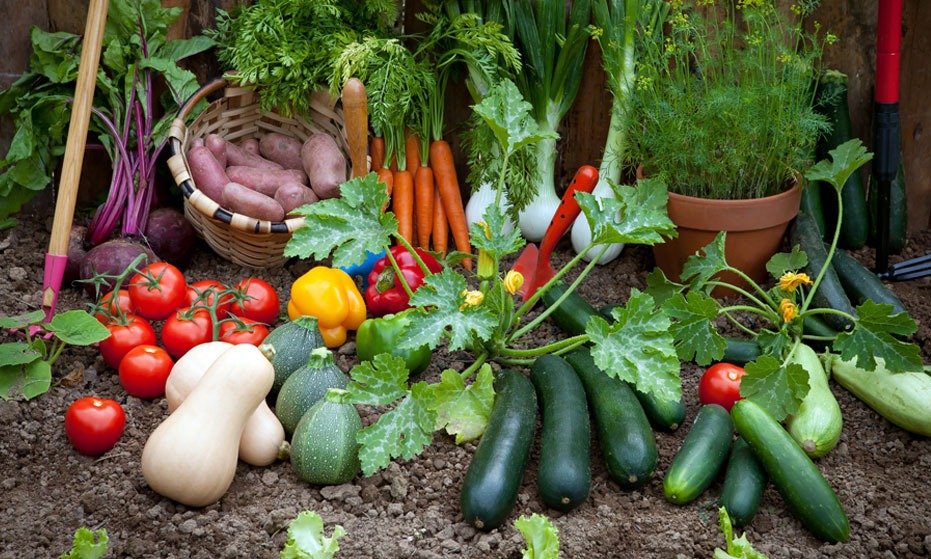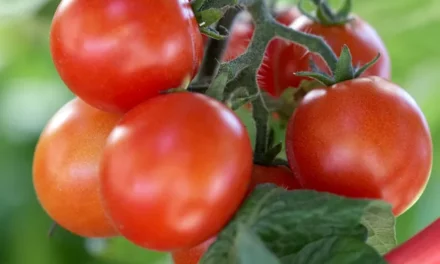Vegetable gardening at home can be a way to save money while you get up close and personal with nature. For example, even just one tomato plant can be super affordable—think $3 to $5—and provide up to 10 pounds of tomatoes over the season, which otherwise can easily run you $20 or more. Growing tomatoes and other favorite vegetables or herbs from seeds can save you even more money. You’ll also find that the flavor and texture of garden-grown produce is even better than what you’re used to finding at the grocery store. Plus, tending your vegetable garden counts as exercise! Dig into these tips and tricks which are given by PK Halder to get your vegetable garden off to a strong start.
:max_bytes(150000):strip_icc():format(webp)/woman-haarvesting-vegetables-in-garden-ad4e9942-6c2139192aec49aeb46256594d1fc8bb.jpg)
-
Start with a Small Space
If you’re a beginner gardener, start small. It’s better to be thrilled by what you produce in a small garden than be frustrated by the time commitment a big one requires. It’s also best to learn a few gardening basics before investing tons of time and money in this new hobby. You’ll get a feeling for how much time gardening takes. You’ll find out if you like spending time outside planting, watering, and weeding. You’ll also learn how much produce you and your family can eat over the course of a summer.
:max_bytes(150000):strip_icc():format(webp)/drip-irrigation-system-lettuce-bf7a920c-906d5a06522742b2af962d2565b190d7.jpg)
-
Grow What You Love to Eat
What do you like to eat? Your answer will tell you what you should plant in your vegetable garden. There are also a few other things to keep in mind when deciding what you want to grow.
Be Picky About Varieties
Pay close attention to the description on the seed packet, tag, or label. Each variety of vegetable comes with certain characteristics. Some produce smaller plants ideal for containers or small gardens. Other varieties offer better disease resistance, improved yields, or better heat- or cold-tolerance. Start by choosing veggies you like to eat, then look into their sizes and care needs.

Productivity
Think about how much you and your family will eat and how likely you are to freeze, can, or give away excess produce. Then be realistic about how many seeds or plants you need to put into the ground. Many beginners make the mistake of planting too much. Vegetables like tomatoes, peppers, and squash keep providing throughout the season, so you may not need many plants to serve your needs. Other vegetables, such as carrots, radishes, and corn, can be harvested only once and then would need to be replanted
Successive Crops
Planting both cool- and warm-weather vegetables will give you a harvest of vegetables and herbs continuously through the spring, summer, and fall. In early spring, grow lettuce, greens (such as arugula), peas, radishes, carrots, and broccoli. After you’ve harvested your cool-weather crops, plant hot-weather favorites, such as tomatoes, peppers, eggplant, and herbs. In fall, you can harvest potatoes, cabbage, and kale.
:max_bytes(150000):strip_icc():format(webp)/red-wood-trellis-garden-e0a68676-2d268b0ca5e84f31b264f6b43daa3867.jpg)
Test Garden Tip: By planting vining crops like green beans and peas, you make use of vertical space in the garden and boost yield per square foot.
-
Choose the Spot for Your Garden
No matter where you put your garden or what you decide to plant, there are two basic requirements that your location needs to meet for the best success: water and light.
Lots of Sunlight Is a Must
Like all plants, vegetables need the sun to kick-start photosynthesis. The fastest-growing vegetables need full sun The fastest-growing vegetables need full sun—at least 6 to 8 hours of direct sunlight a day—without blockage from trees, shrubs, or fences. That’s why you won’t have much success if you plant sun-loving vegetables in shady spaces. If your yard provides partial shade, plant vegetables and herbs that tolerate those conditions, such as lettuce, kale, chard, spinach, chives, cilantro, parsley, and thyme.
Think About Convenient Water Access
The closer you can site your plot to a water source, the better. You’ll need to be able to water frequently during the first few weeks after seeds germinate or seedlings are transplanted to help these fragile plants produce strong roots and stems. Once your plants are established, it’s better to give your garden a long drink every few days rather than a little sprinkle every day.
:max_bytes(150000):strip_icc():format(webp)/row-cropping-vegetables-73c0621c-5051b83cb67e4539aeab33c271a59964.jpg)
-
Plan Your Vegetable Garden Layout
Choose either row cropping or intensive cropping—there are benefits to each!—when you plan your vegetable garden’s layout.
Row Cropping
Place plants single file in rows at least 18 inches apart so you can walk easily between them. This approach makes the most sense for large vegetable gardens because rows make it easier to use mechanical equipment, such as tillers, to battle weeds. The downside is that space set aside for footpaths cuts down on the number of vegetables you can plant.

Garden hack: Tall plants generally do well on the north side of the garden. This includes naturally tall plants that can be grown on vertical supports, including peas, cucumbers, and beans. Save money by making your own A-frame trellis for growing vegetables.
Intensive Cropping
Boost your garden’s productivity with intensive cropping, which means that you space two or three plants close together in a bed about 4 feet wide (aka a wide row). Seeds are sown or transplants are placed so that their leaves will barely touch at maturity. This approach, which uses almost every square inch of the prepared soil, works well for most types of vegetables, excluding the ones that vine such as cucumbers. The downside of this method is that you have to weed by hand because the plants grow so close together.

The square-foot method, in which you subdivide a raised 4×4-foot garden bed into 1-foot squares using a physical grid—such as lattice strips—is a specialized version of intensive cropping. You’ll need 8 cubic feet of top-quality garden soil to fill such a bed with 6-inch-high sides. The planting formula is simple: 1 extra-large plant per 1×1-foot square; 4 large plants per square; 9 medium plants per square; and 16 small plants per square. Mix and match at will.
-
Start Plants in Rich Soil
For the best harvest, your vegetable garden needs the best soil you can give it. Rich, healthy soil is something you know when you feel it: It’s easy to dig and drains well. Pick up a trowel’s worth and put it in your hands. Does it feel gritty? Too much sand. Is it powdery? Too much silt. Is it sticky when wet? Too much clay. The combination of these three types, and in which specific proportions, determines the texture of your garden soil. That texture affects drainage and the availability of nutrients.

Clay soils are just the opposite. They contain very small, densely packed particles that hold moisture but don’t allow much air space for plant roots. Compost helps separate those tiny clay particles so water can drain more freely and plant roots can get needed oxygen. If it’s not clear which type of soil you have, send a sample to a state-certified soil-testing lab for analysis.
SOIL PLANTING
To prepare your soil for planting, spread any needed amendments like compost and work them into the soil with a tiller or spade. Avoid stepping on freshly tilled soil or you’ll compact it and undo all your hard work. Then rake the surface smooth and water thoroughly. Allow the bed to rest several days before you plant so the soil amendments can do their work.

Best garden advice: Raised garden beds are an easy option if you have poor soil. Build the raised beds on the existing lawn by lining the bottom of frames with several layers of newspaper, then filling with soil. That way, you don’t have to do as much digging.
-
Be Ready for Pests and Diseases
Some problems require special solutions, but in general, follow these guidelines for keeping pests away from your veggies.
Stop Weeds in Their Tracks
Weeds compete with your vegetables for light, water, and nutrients, so it’s important to keep them to a minimum. A mulch of clean straw, compost, or plastic can keep weeds at bay around larger plants like tomatoes. Use a hoe to discourage any weed seedlings that do pop up.
:max_bytes(150000):strip_icc():format(webp)/beetle-on-chewed-leaf-ac583b8a-a9cd2a65fcd5469181ecf8ba5b4fab69.jpg)
Keep Animals Out
Big pests, such as deer and rabbits, can wreak havoc in an edible garden. It takes an 8-foot-tall fence to keep deer from jumping into the garden. A fence needs to extend 6 inches beneath the soil to stop rabbits and other burrowing critters from digging their way in.
Deter Destructive Insects
Picking off large insects and caterpillars by hand—and dropping them into a bucket of sudsy water—is a safe, effective way to deal with limited infestations. For bigger quantities of insects, try insecticidal soap sprays that you can find at most garden centers. Whichever pest-control chemicals you use, carefully follow the manufacturers’ directions.
Fight Fungal Diseases
Reduce the likelihood of fungal diseases by watering the soil, not the leaves of the plants. If you use a sprinkler, do it early in the day so the leaves will dry by nightfall. If a plant falls prey to a disease, promptly remove it and throw it in the trash; don’t add sick plants to your compost pile. Additional disease preventatives include growing vegetable varieties listed as disease-resistant and changing the location of your plants each year (crop rotation) to reduce disease-causing microbes from building up their populations.

Reference
https://www.bhg.com/gardening/vegetable/vegetables/planning-your-first-vegetable-garden/











